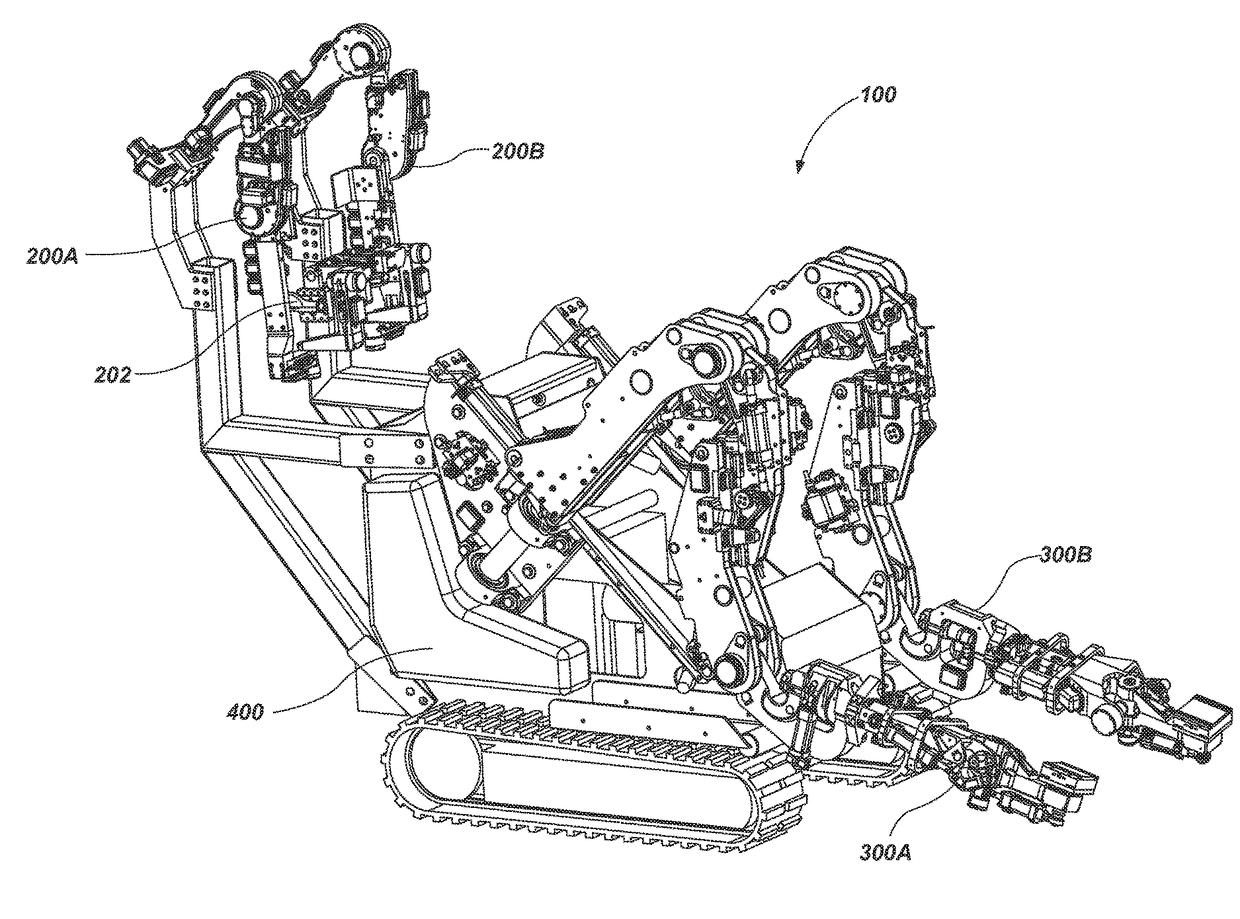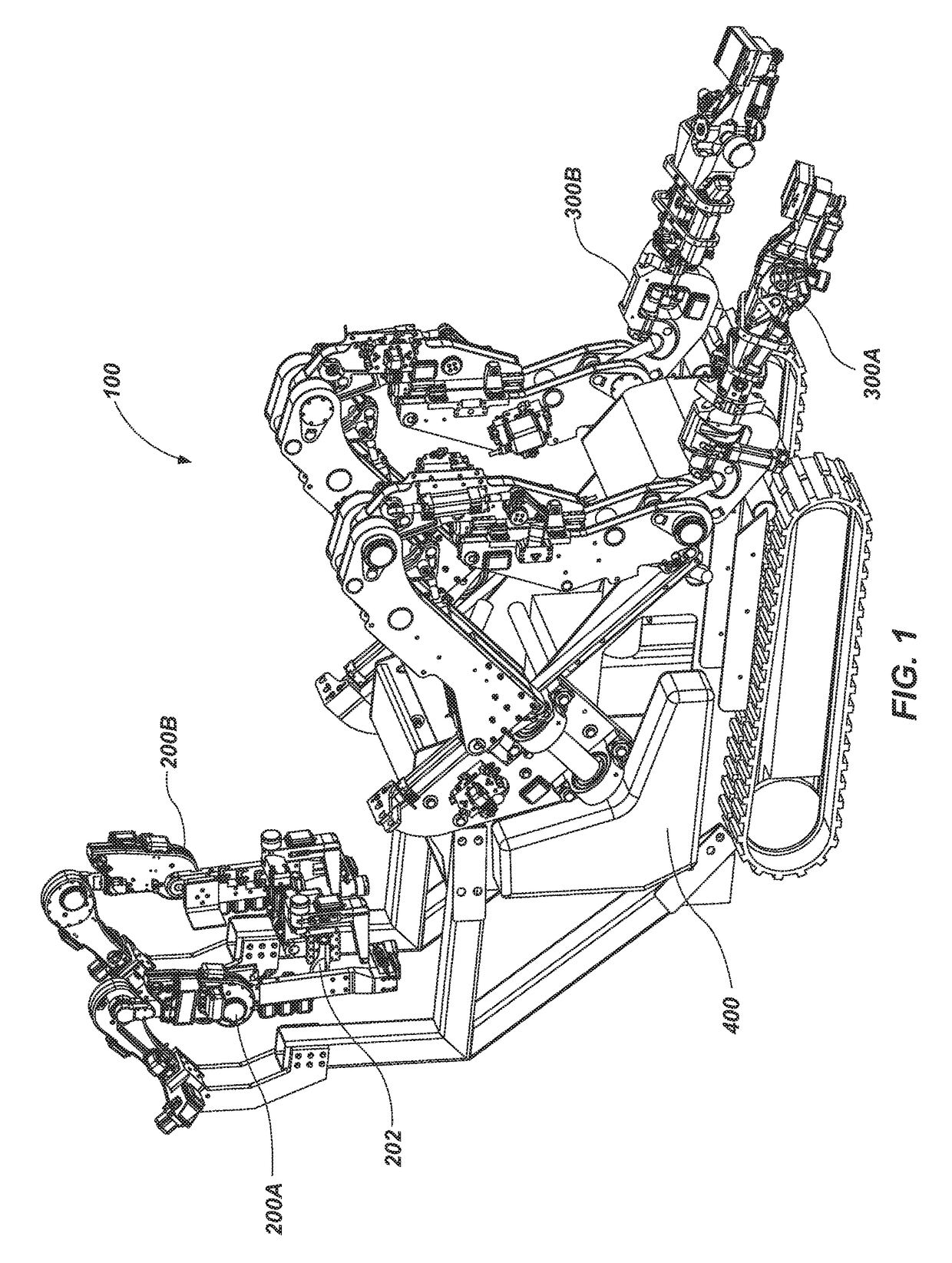Teleoperated robotic system
a robotic system and teleoperation technology, applied in the field of teleoperation robotic systems, can solve the problems of system limitation inability to meet the needs of certain tasks, etc., and achieve the effect of avoiding the need for special equipment or equipment, avoiding the need for special equipment, and being convenient to us
- Summary
- Abstract
- Description
- Claims
- Application Information
AI Technical Summary
Benefits of technology
Problems solved by technology
Method used
Image
Examples
Embodiment Construction
[0073]The present invention is related to nonprovisional U.S. patent application Ser. No. 13 / 332,152, filed Dec. 20, 2011, and entitled, “System and Method for Controlling a Teleoperated Robotic Agile Lift System”; Ser. No. 13 / 332,138, filed Dec. 20, 2011, and entitled, “Platform Perturbation Compensation”; Ser. No. 13 / 332,146, filed Dec. 20, 2011, and entitled, “Robotic Agile Lift System with Extremity Control”; Ser. No. 13 / 332,129, filed Dec. 20, 2011, and entitled, “Multi-degree of Freedom Torso Support for a Robotic Agile Lift System”; Ser. No. 13 / 332,160, filed Dec. 20, 2011, and entitled, “Variable Strength Magnetic End Effector for Lift Systems”, each of which are incorporated by reference in their entirety herein.
[0074]As used herein, the singular forms “a,” and, “the” include plural referents unless the context clearly dictates otherwise. Thus, for example, reference to “a robotic arm” includes one or more of such robotic arms and reference to a “degree of freedom” (DOF) in...
PUM
 Login to View More
Login to View More Abstract
Description
Claims
Application Information
 Login to View More
Login to View More - R&D
- Intellectual Property
- Life Sciences
- Materials
- Tech Scout
- Unparalleled Data Quality
- Higher Quality Content
- 60% Fewer Hallucinations
Browse by: Latest US Patents, China's latest patents, Technical Efficacy Thesaurus, Application Domain, Technology Topic, Popular Technical Reports.
© 2025 PatSnap. All rights reserved.Legal|Privacy policy|Modern Slavery Act Transparency Statement|Sitemap|About US| Contact US: help@patsnap.com



